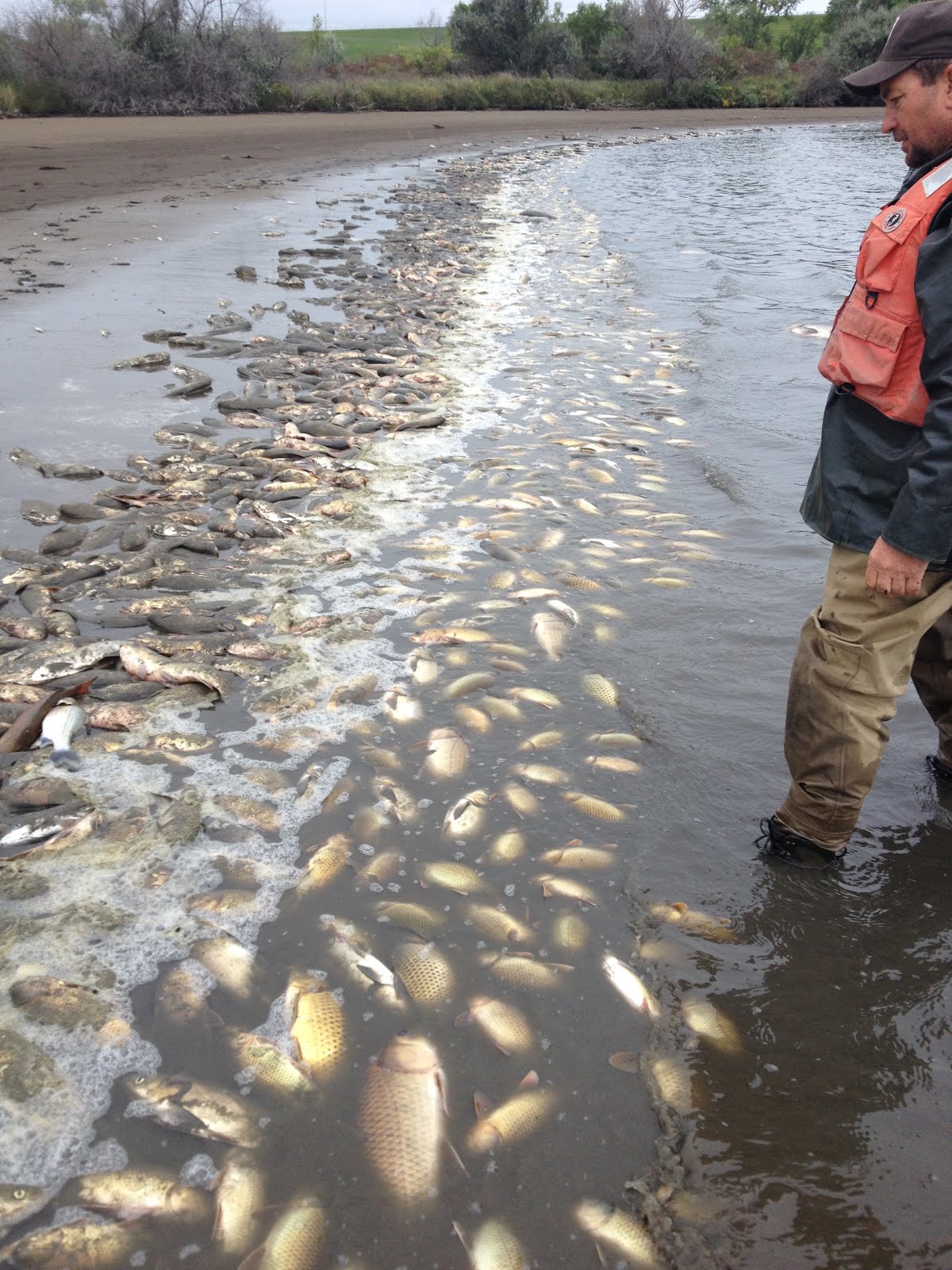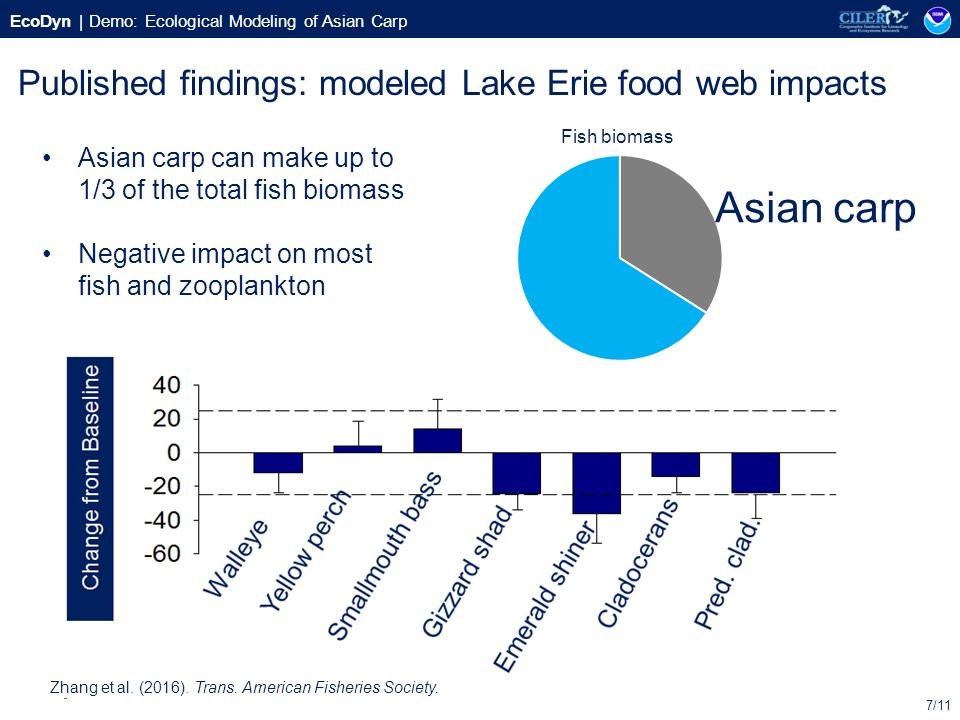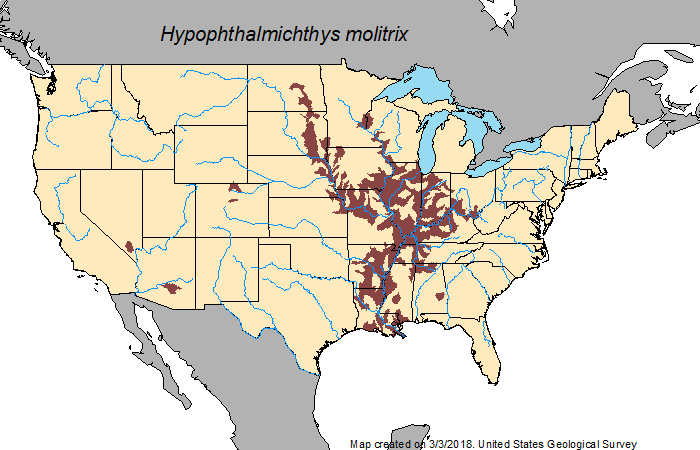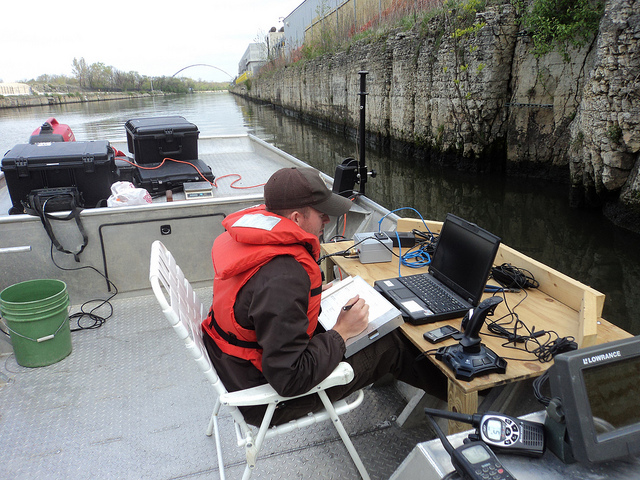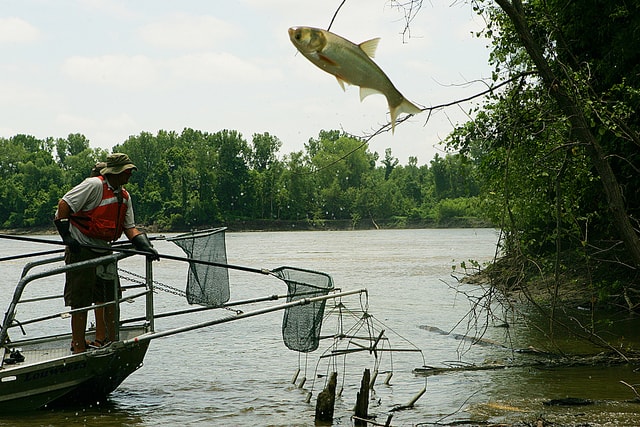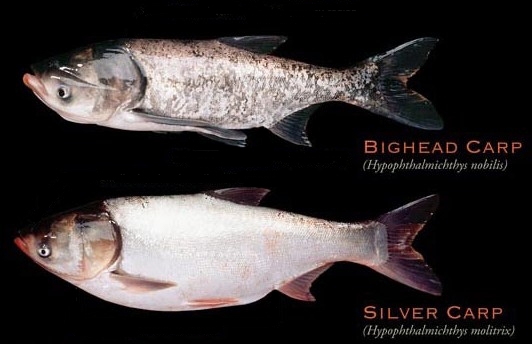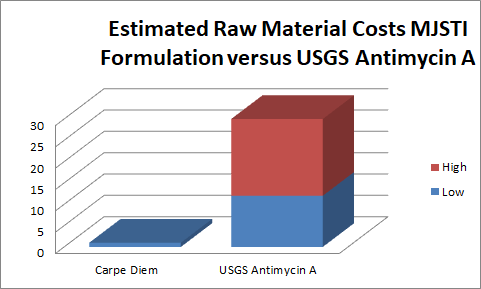
Asian Carp Pose Environmental, Safety, and Financial Threats to the Mississippi River Basin and Great Lakes
Help Us Defend Our Rivers and Lakes
Your Sponsorship Will Help Ensure Conservation Officers Have a Proven, Safe, Selective, and Low-Cost Method for Controlling the Asian Carp Population.
Environmental Threats
Murky Waters
The Bighead, Silver, and Common carps invaded Lake Yankton in a 2011 flood. By 2014, they comprised over 70+% of the fish bio-mass.
Water visibility decreased from 7+ feet to under a foot and all the game fish were gone.
The Asian carp problem became so prolific that officials decided to kill ALL the fish with the highly toxic Rotenone.
It costs millions of dollars to restore Lake Yankton. The lake is now a sport fishing destination.
Pushing Out Native Fish
Changing the Composition of Plankton- The Building Block of Life
Plankton are floating organisms including (but not limited to) algae, bacteria, immature animals and protozoa. Plankton is the basis of aquatic animal life.
Asian carp quickly out-compete native filter feeding fish for this food source. Because the Bighead and Silver carp can eat smaller particles than paddlefish, the plankton never becomes large enough for the paddlefish to eat.
These carps’ digestion is inefficient, and they are always excreting. The excrement will change clear water green. The bighead and silver carp will concentrate toxic blue-green algae.
Strong Migration Instinct
Their territory grows every year. The Bighead and Silver carp move freely throughout the Mississippi Basin, crossing locks and traveling hundreds of miles a season.
2019 is a Mississippi Basin flood year. The Bighead and Silver carp population explode in flood years. In 2020 millions of new bighead and silver carp will migrate for food.
Threatening A Way of Life for
Boaters & Fishers
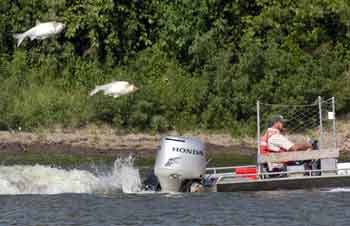
Concussions, Broken Bones, and Bruising
Getting hit with a 20 lb. flying Asian carp is no joke. There are reports of concussions, broken bones, cuts, and bruising.
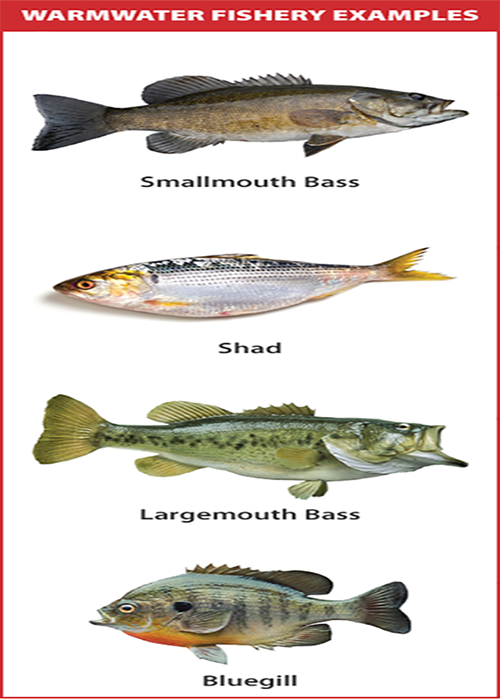
Ruining Fishing
1. Barriers
The electric fences in the Chicago Area Waterway System (CAWS) cost over $245 million and are very effective. The Army Corps of Engineers (ACE) built lower cost land barriers in Ft. Wayne, IN, Cook County, IL area, closed the St. Anthony lock in Minneapolis and is building a land barrier in Ohio. ACE proposed an additional CAWS Brandon lock barrier with a current forecast cost of $831 million.
2. Enforcement, Education & Early Detection
It’s illegal to own live Asian carp in most states.
3. Population Control
Harvesting is expensive, dangerous and ineffective. The exception is contract harvesting of small, non-reproducing isolated lakes, dam pools or ponds which can remove almost all carp. Commercial harvesting is an economic activity that removes large carp, allowing the small fish to grow large and perpetuate the species.
all 6,400 river miles if we are to control the Asian carp population.
A Proposed Solution
What Is a Pesticide?

The Definition:
Pesticides are regulated by the EPA.
Are All Pesticides Dangerous?


The Ideal Pesticide
Meet MJSTI
MJSTI is a Kansas City area startup that has spent 3 years developing a proven safe, selective, and low-cost pesticide for Asian Carp.
1. Safe

2. Selective
Conservation officers should be able to increase the selectivity by choice of bait and habitat.
3. Low Cost
The MJSTI’s estimated raw material cost is 1/12 to 1/30 the raw material cost of USGS Antimycin A/ beeswax bead. The MJSTI raw materials are readily available and EPA registered pesticide ingredients with one exception: lysine, which is an amino acid essential for life. All the materials have well-accepted and public toxicity studies. The safe, accepted and public toxicities should allow for a fast and low-cost EPA formula registration.
How the MJSTI Pesticide Works
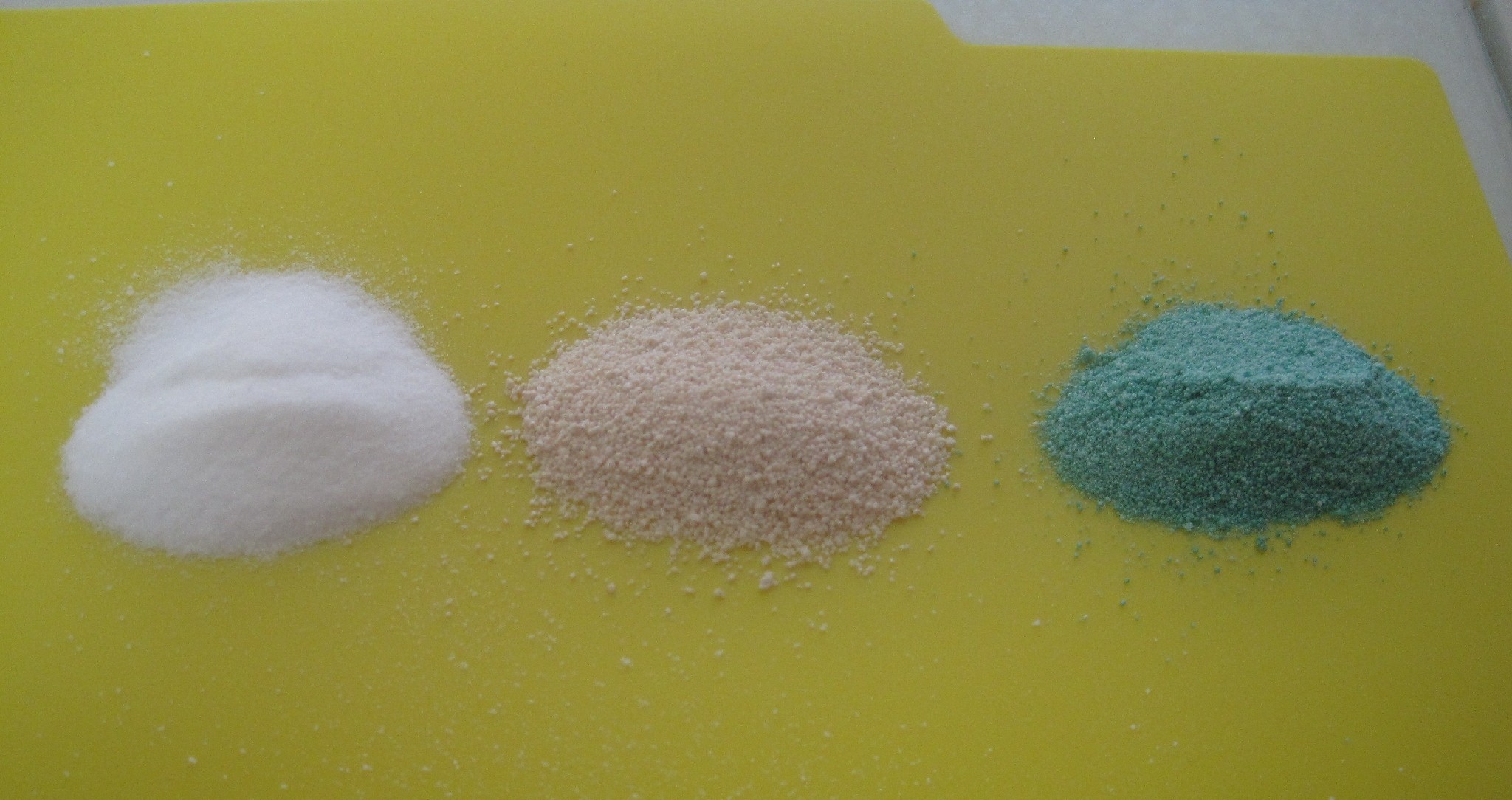
Only fish that eat like the bighead and silver carp should be affected (i.e. gizzard shad and largemouth buffalo). If nothing is done about the Asian carp, native filter feeding fish are endangered. Copper is a micro-nutrient needed for life. Copper is 10X more toxic to fish than mammals.
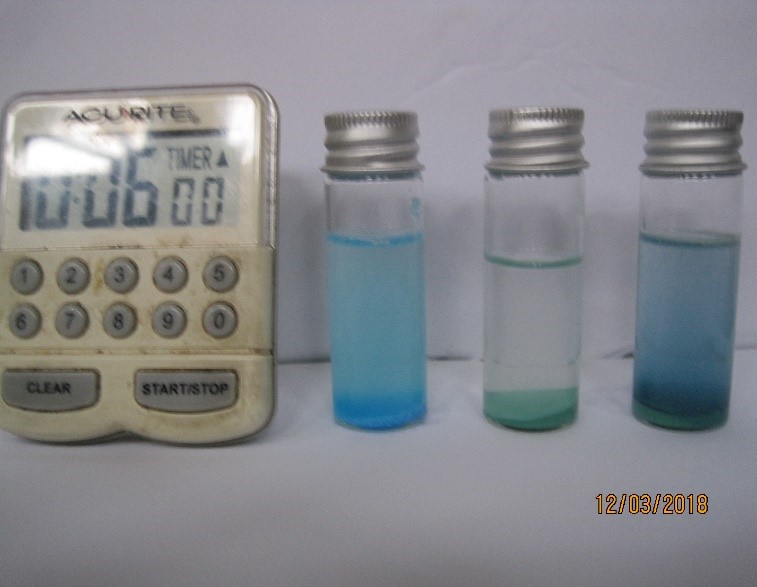

An anonymous nonprofit organization is assisting Maurice Sadowsky to commercialize the digestive, FDA additive carp pesticide. The market is too small for private investors. Activities include pilot plant production, bighead and silver carp toxicity, non-target species toxicity testing and EPA registration. Financing is still needed as the total costs could exceed $500,000. MJSTI will continue to offer the technology to the Federal government; Maurice Sadowsky would receive a royalty. Maurice Sadowsky invested over $50,000-and-three-man years of work and cannot continue to self-fund the project development. Please consider a donation: $5 is good, $25 is wonderful.

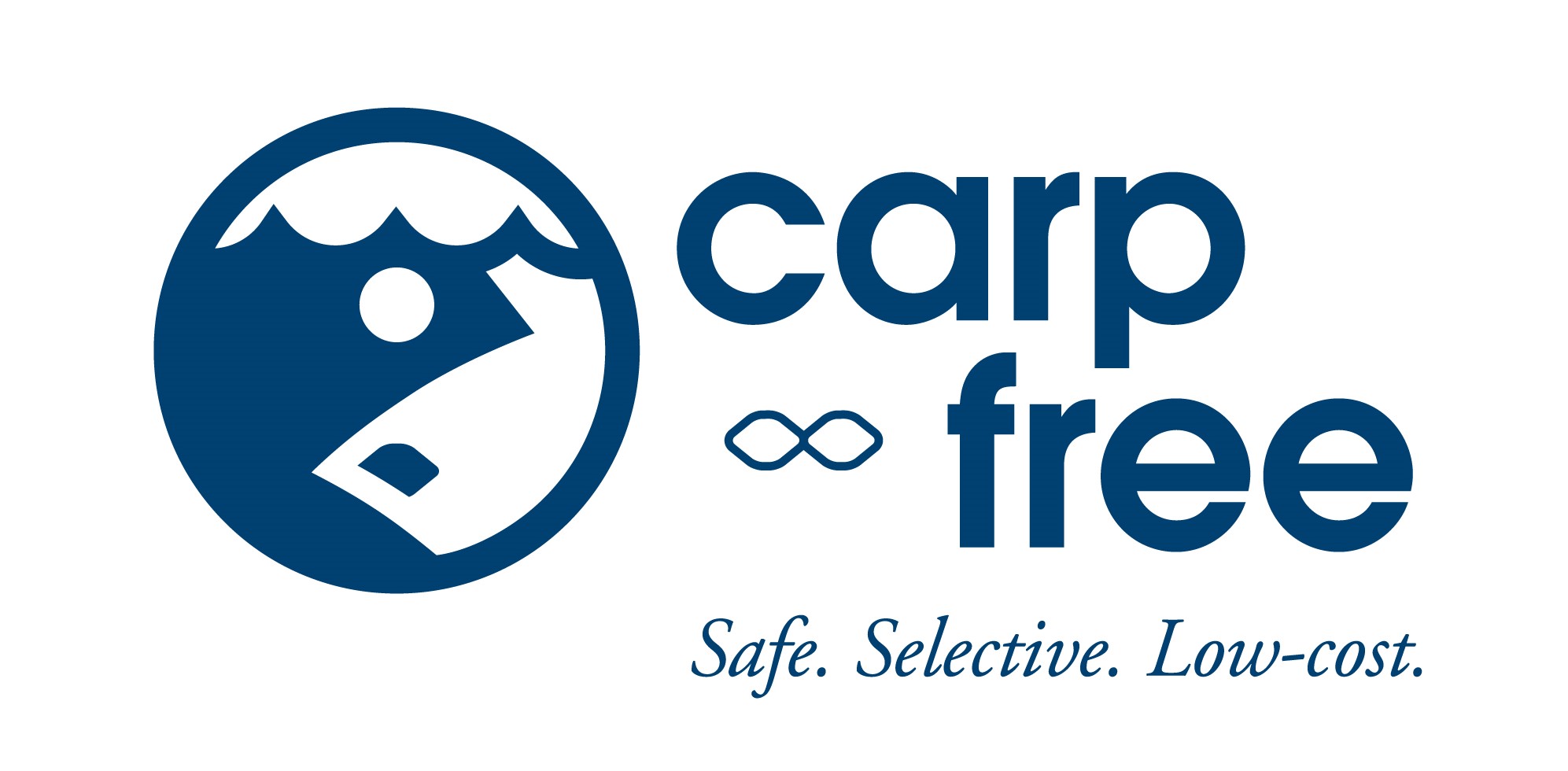
We Need Your Help!
Be Part of the Solution.
There are over 20 million people (fishers, boaters, paddlers) directly affected by the Asian Carp invasion. MJSTI has spent over $50,000 and 3 man years to prove the formulation of its pesticide.
PROVEN, FDA additive, digestive and low material cost method to control the Asian carp. MJSTI is working with the Federal government to commercialize the formulation and has and will continue to offer the technology to the Federal government.

